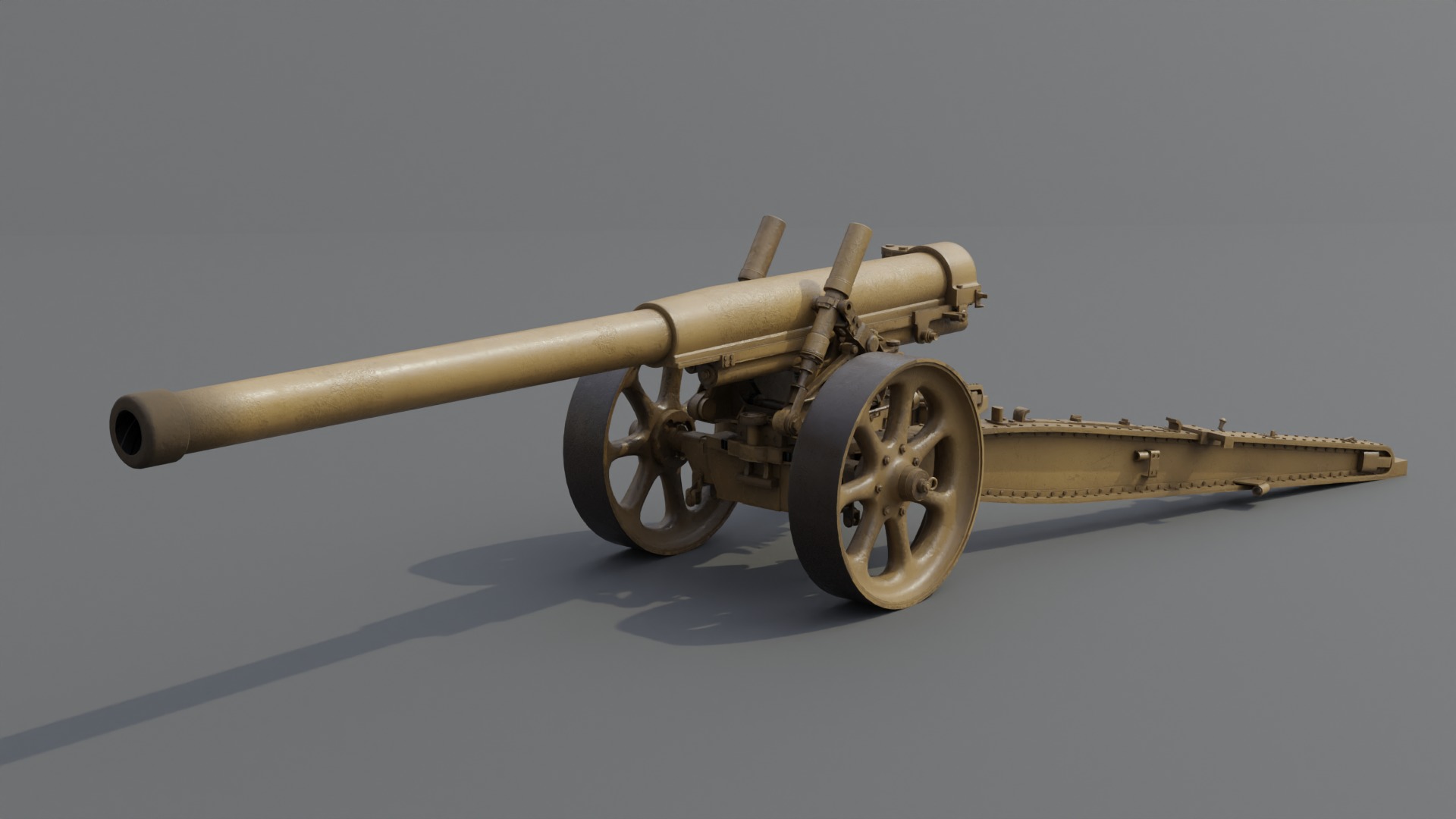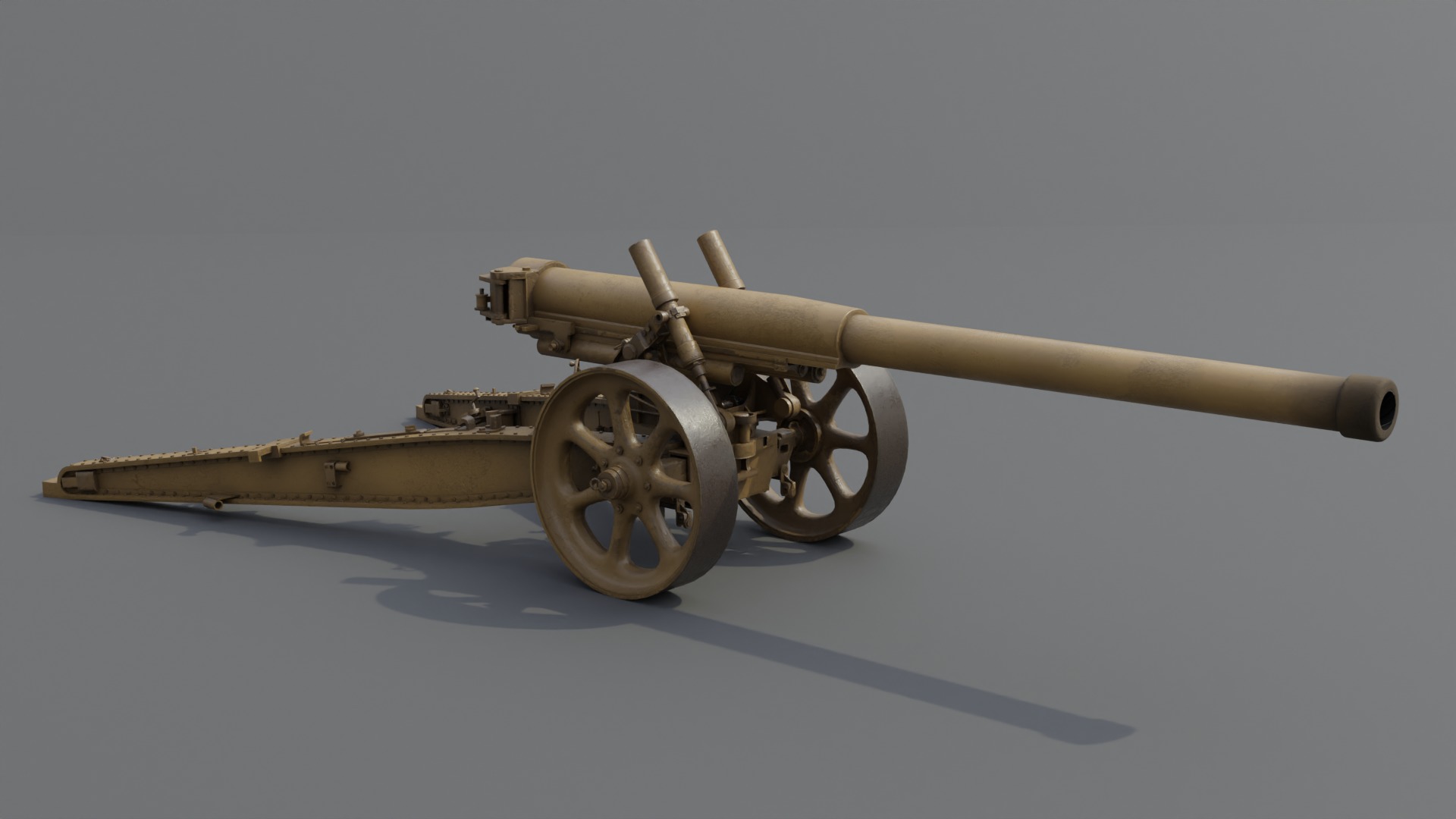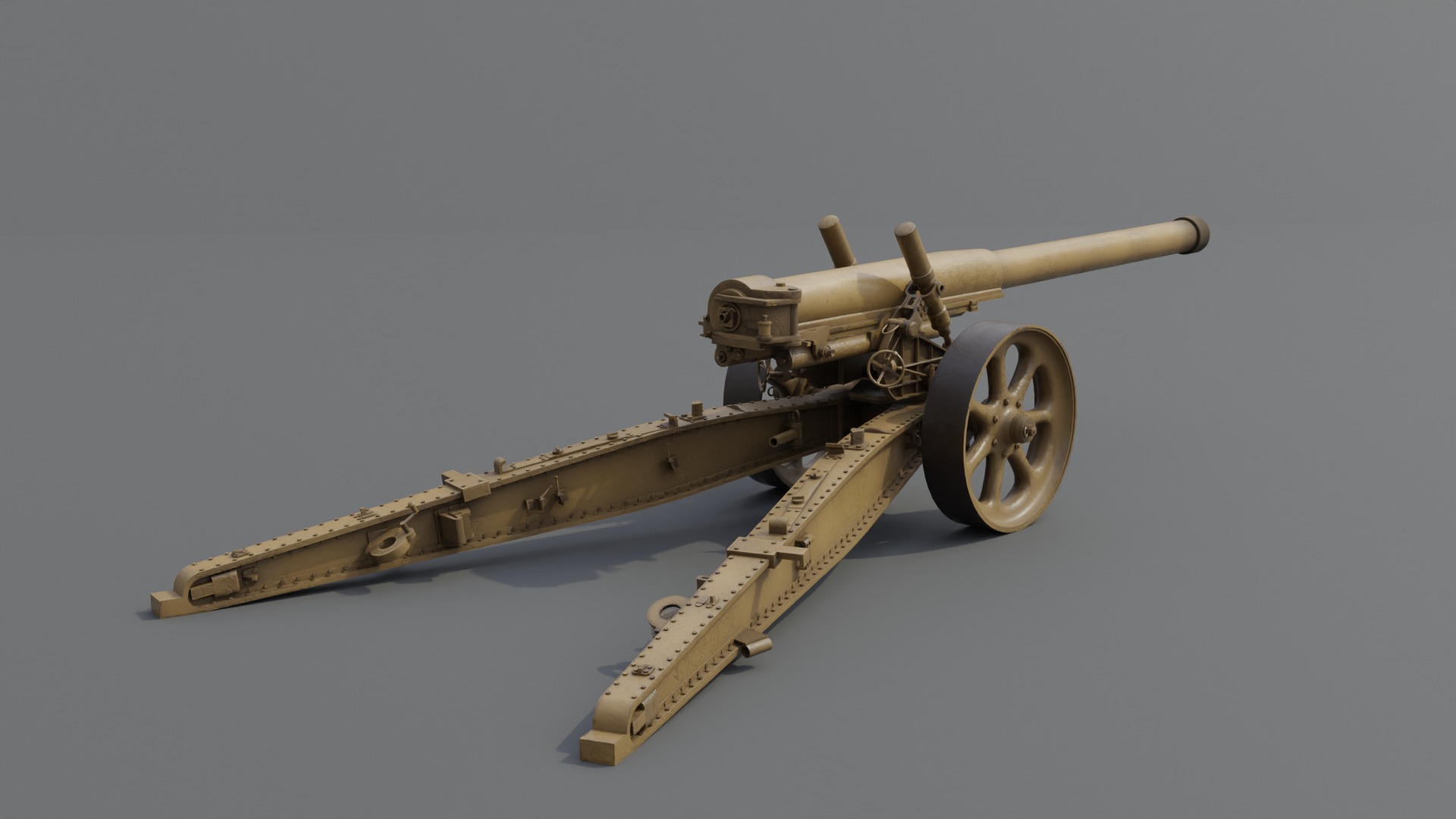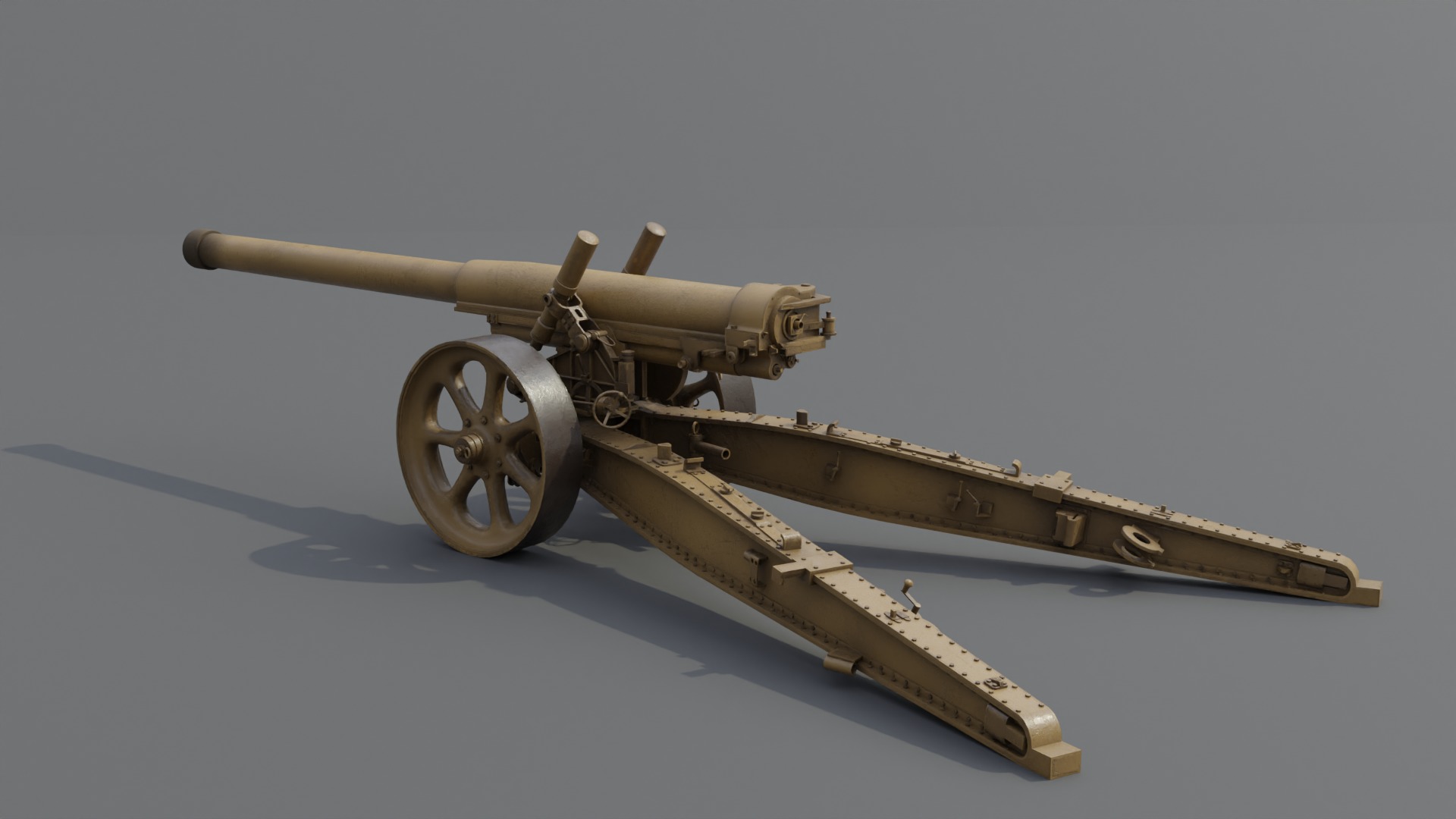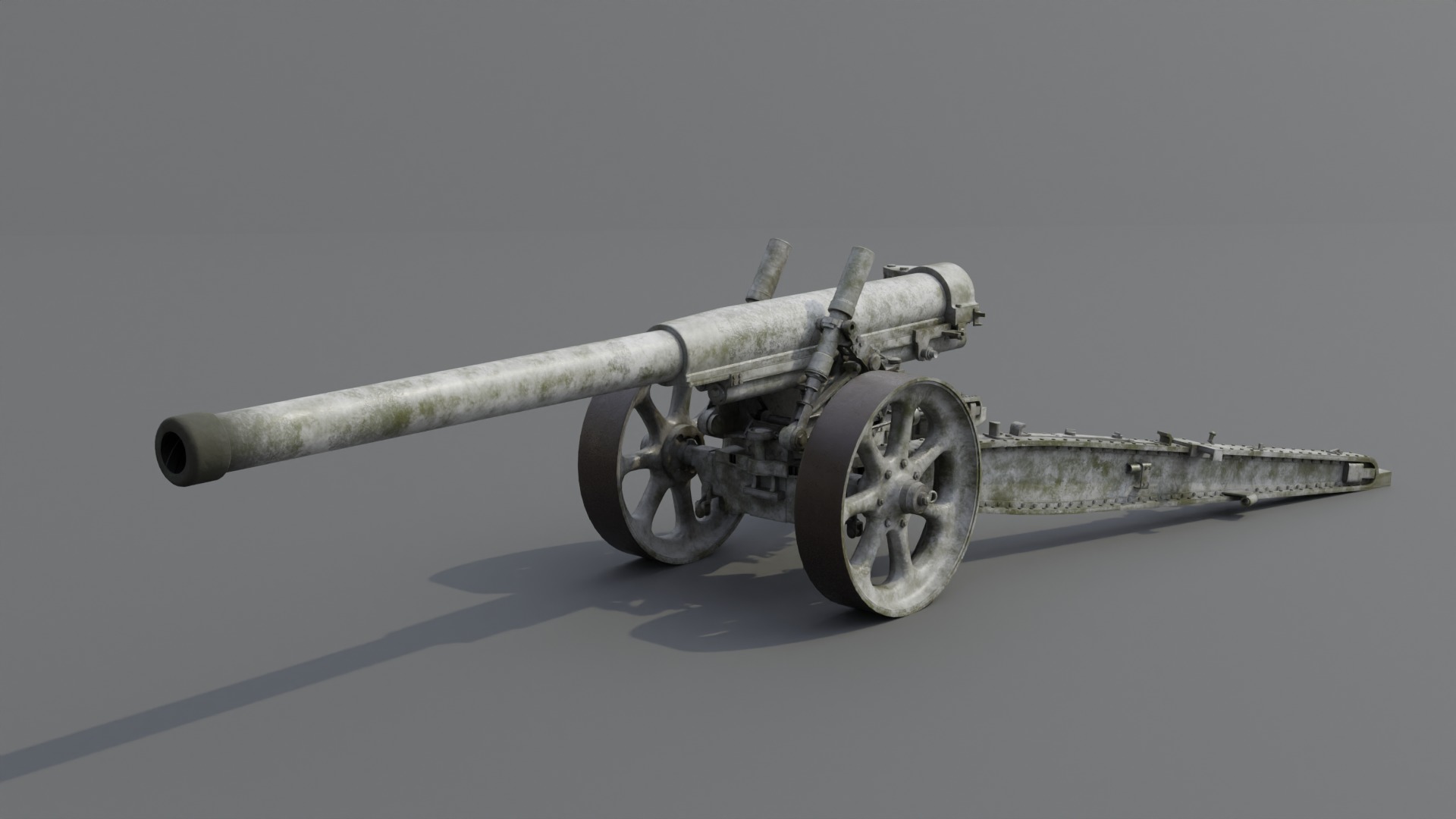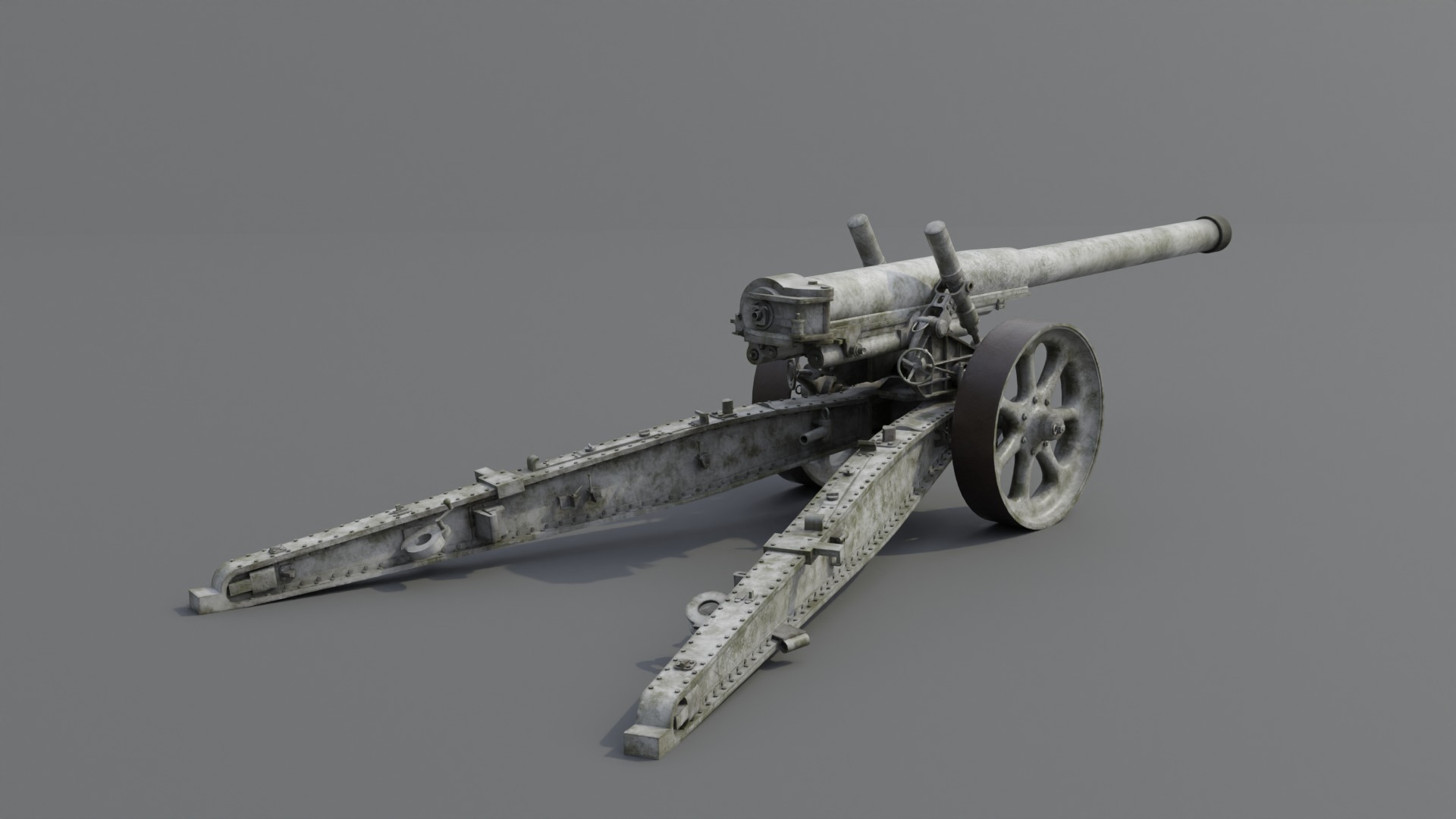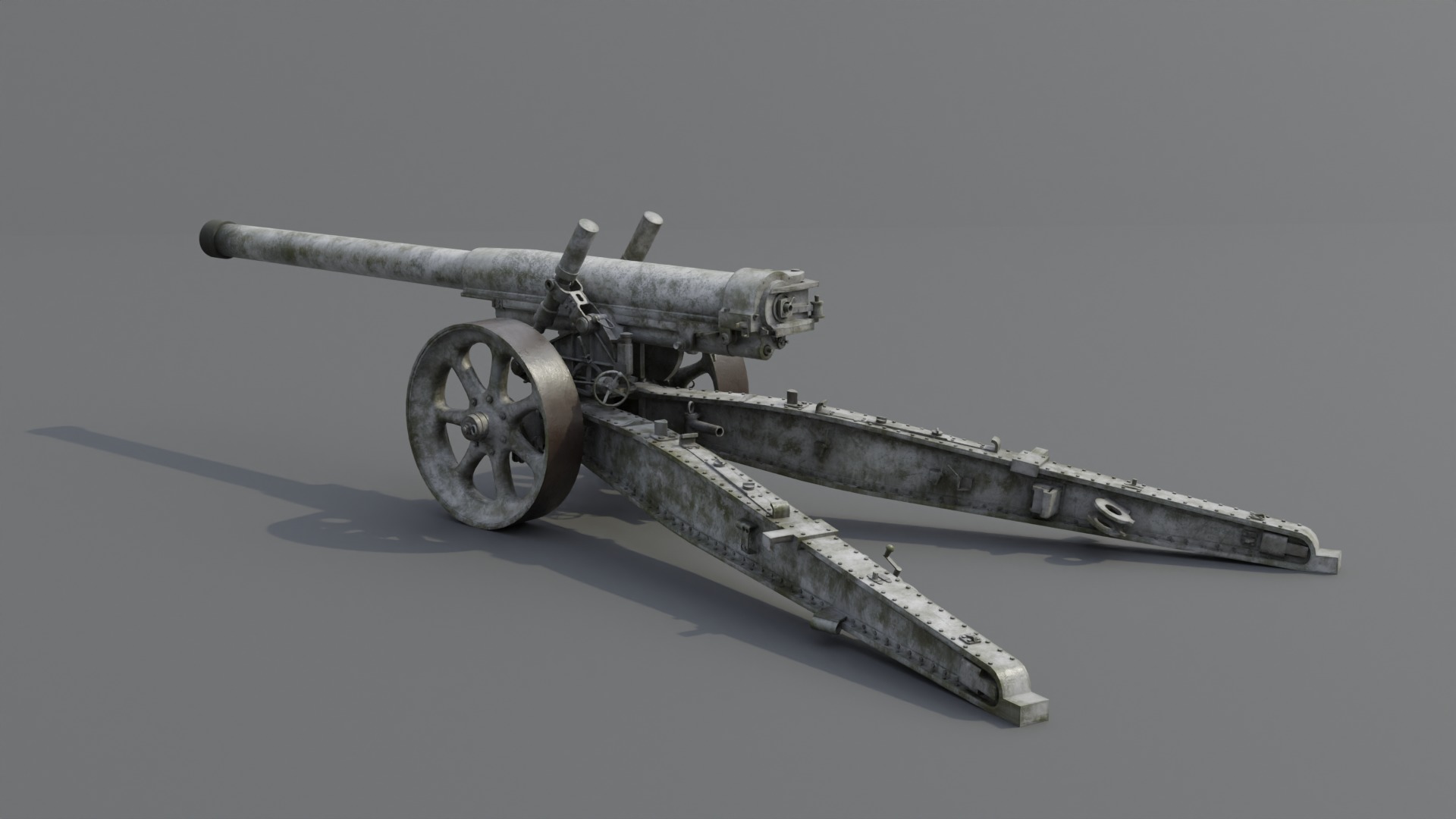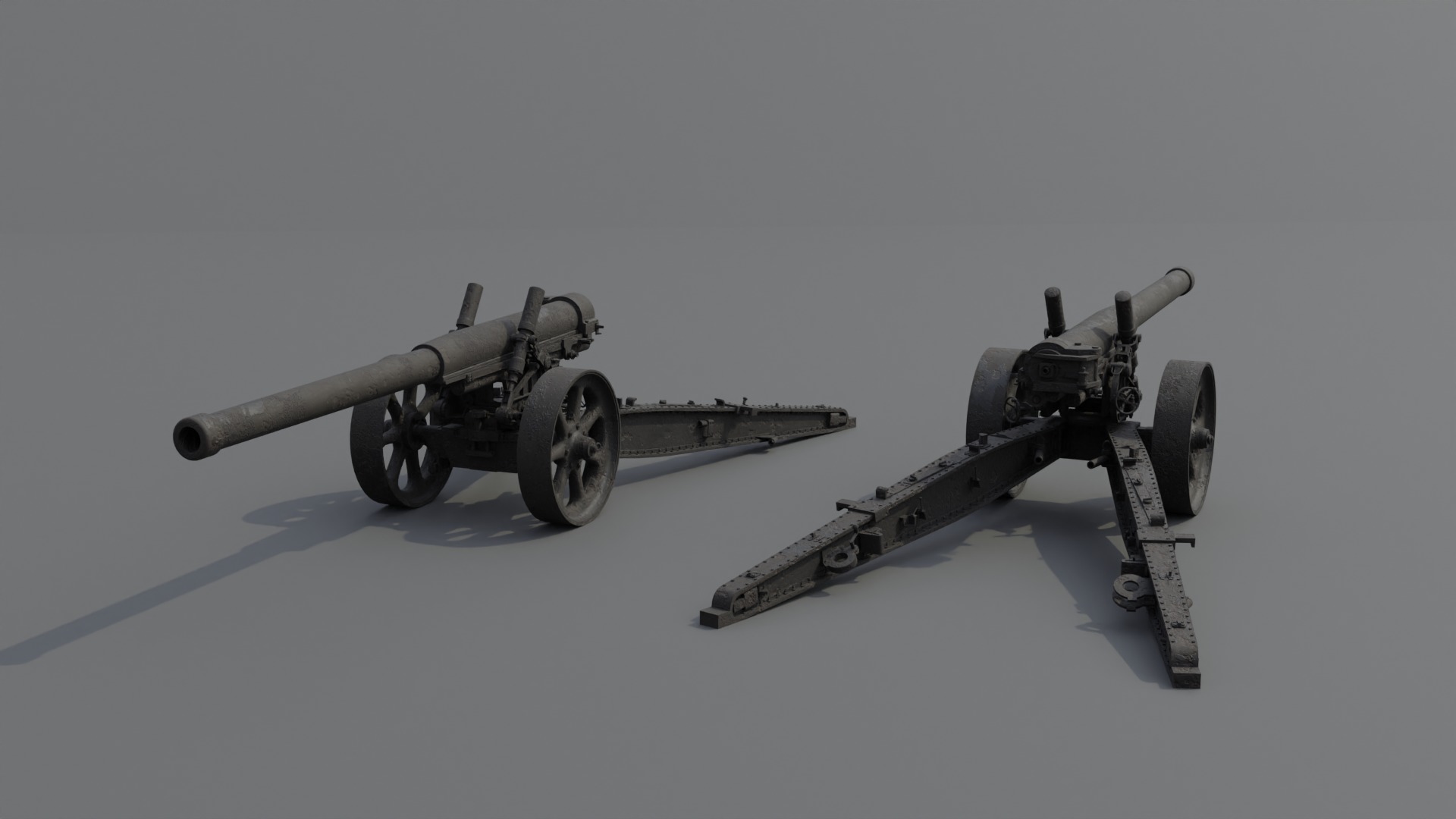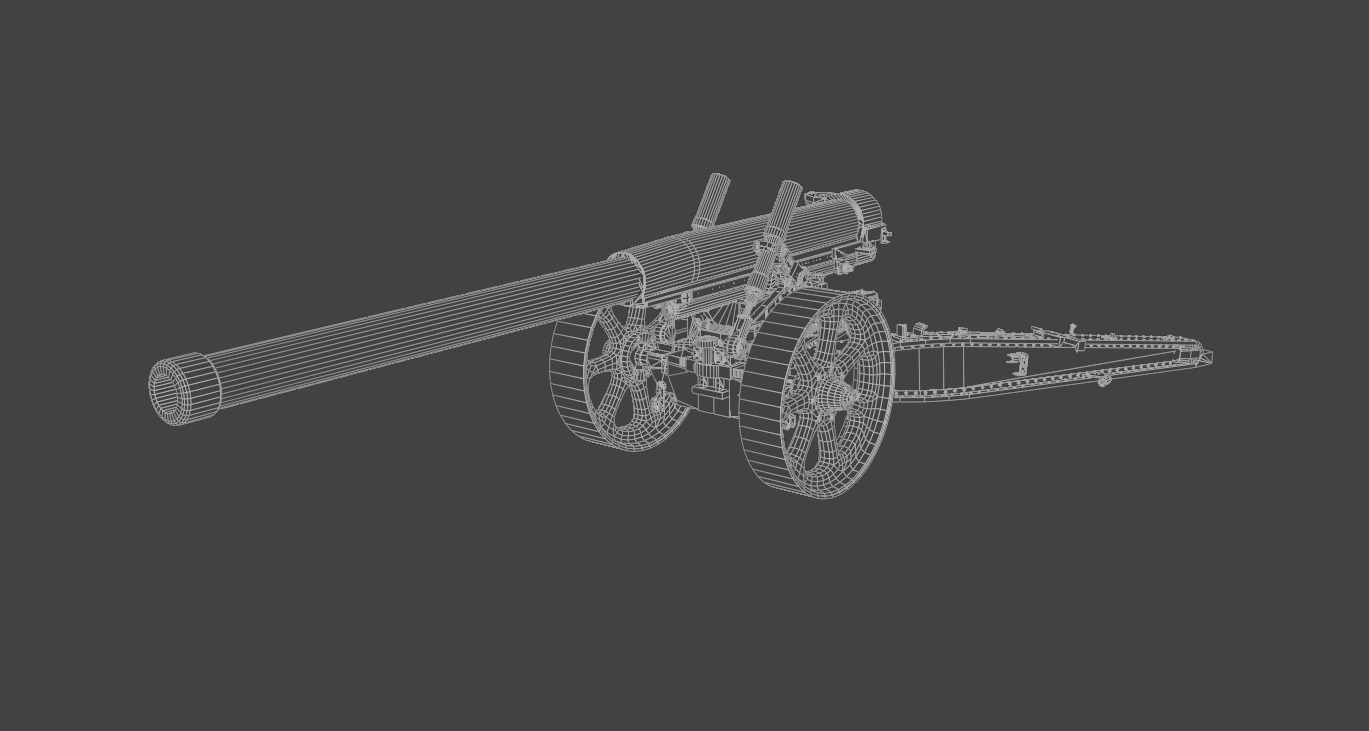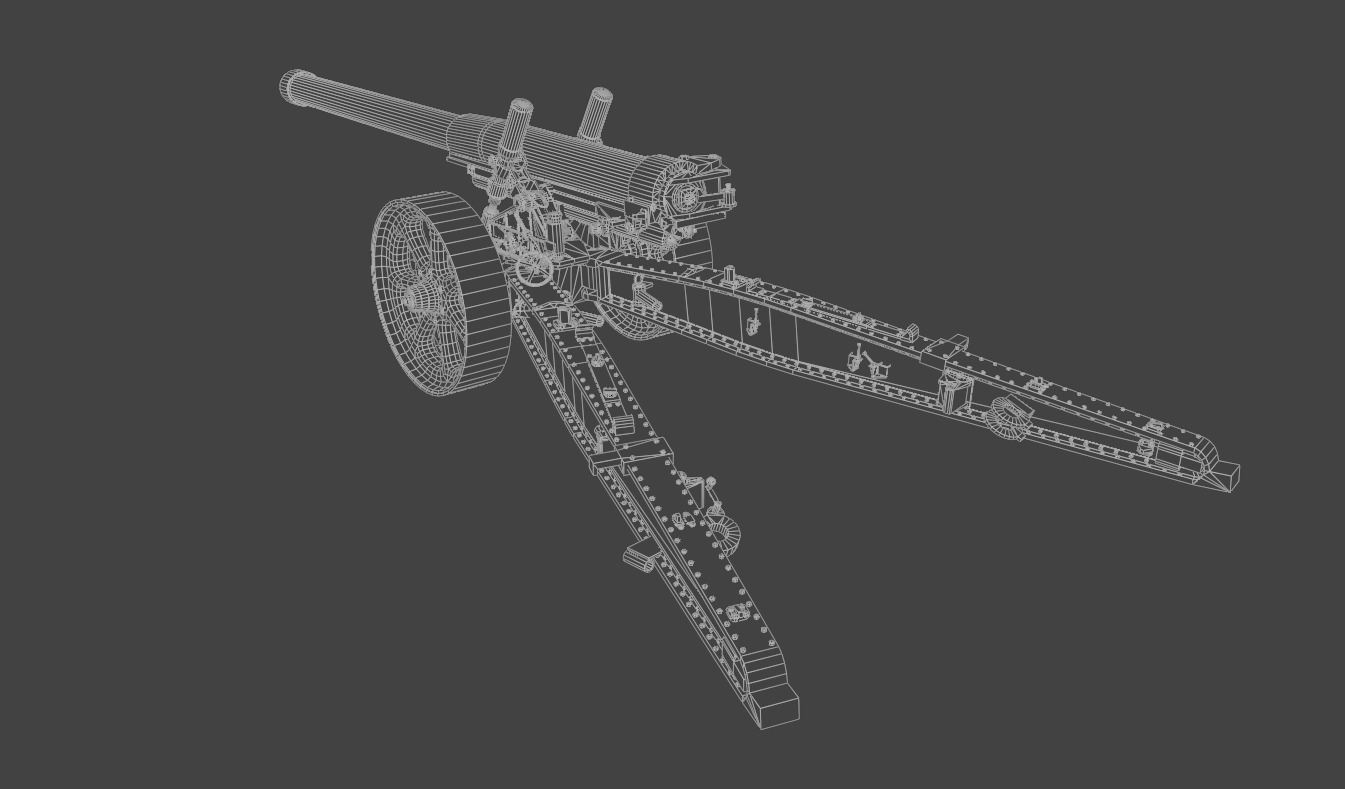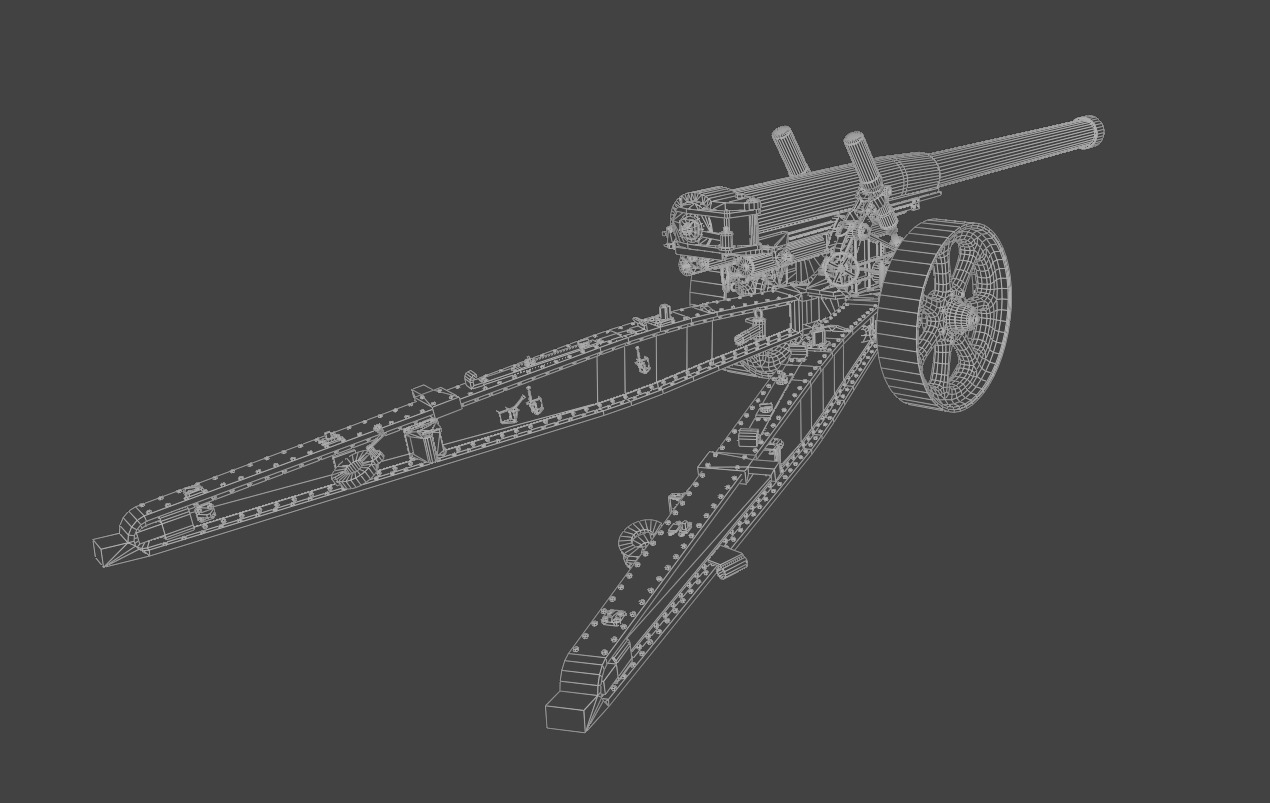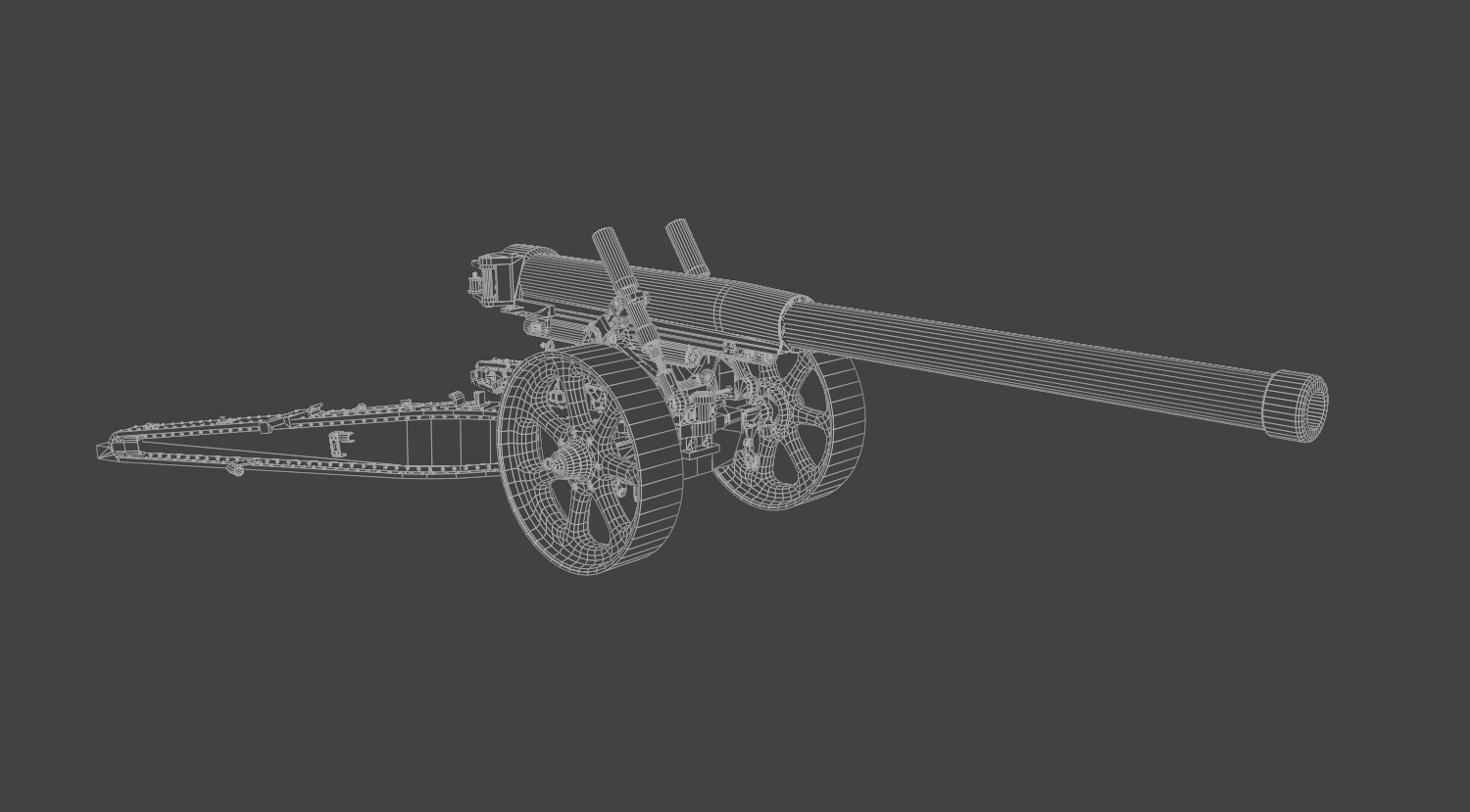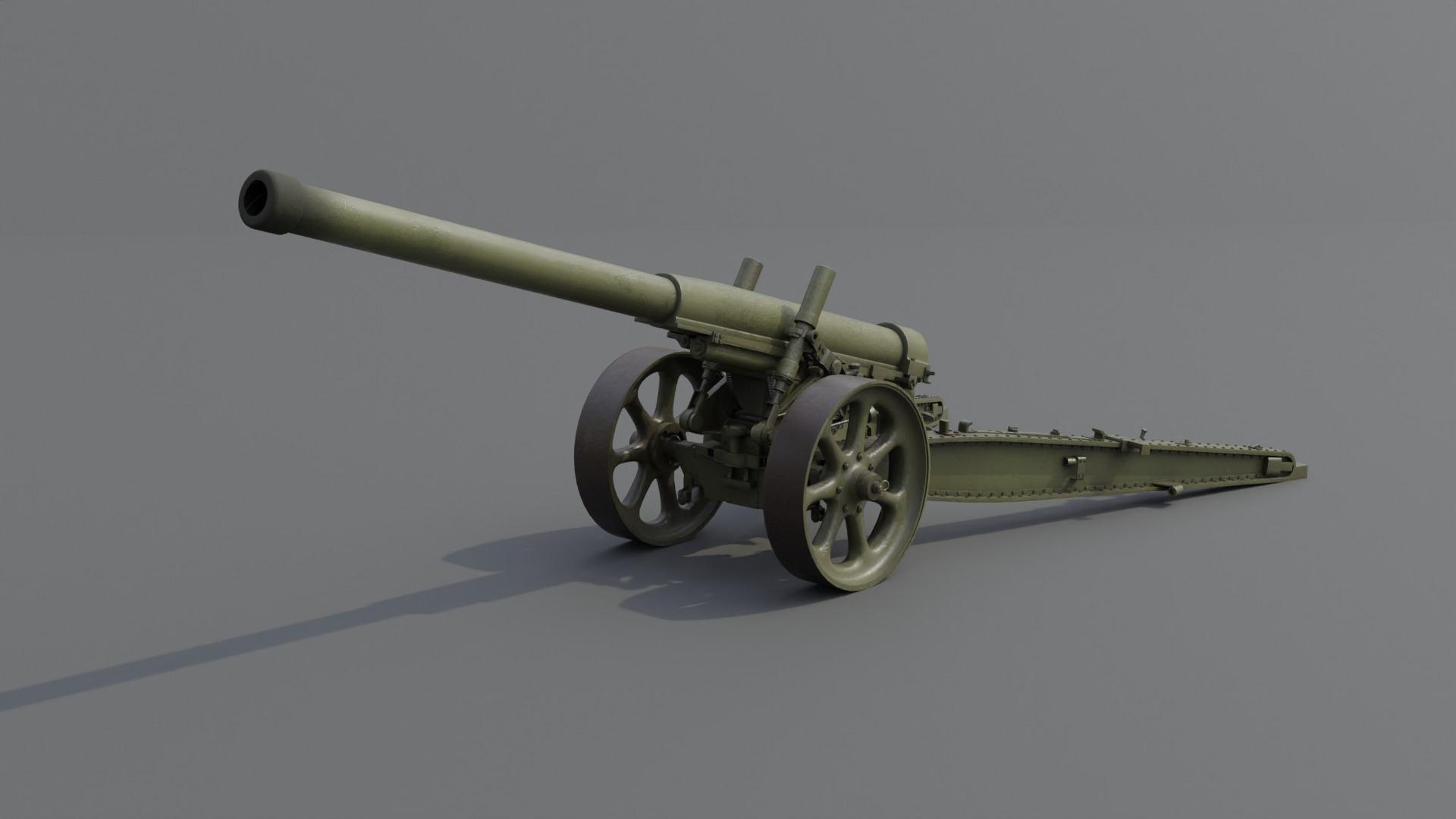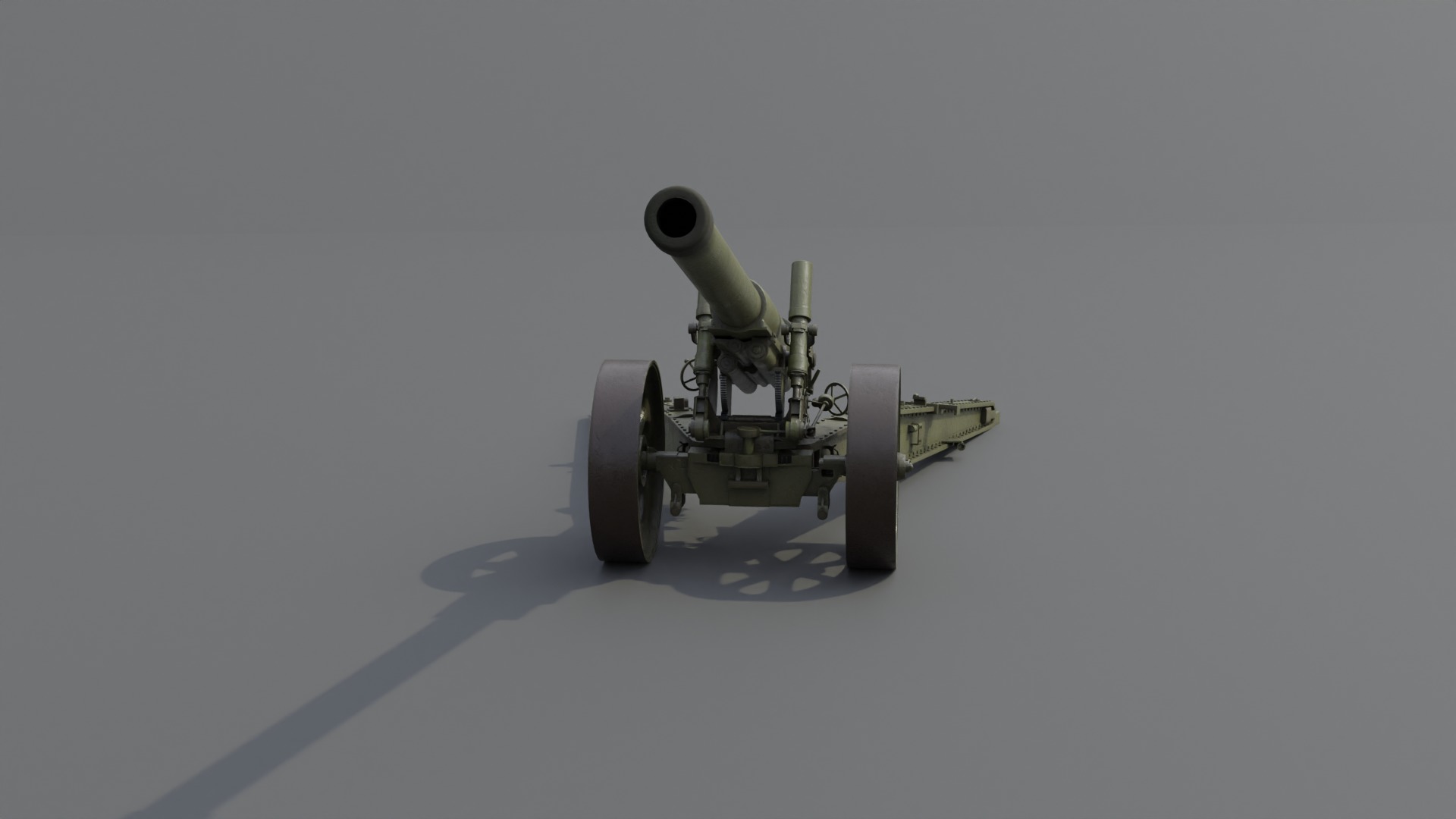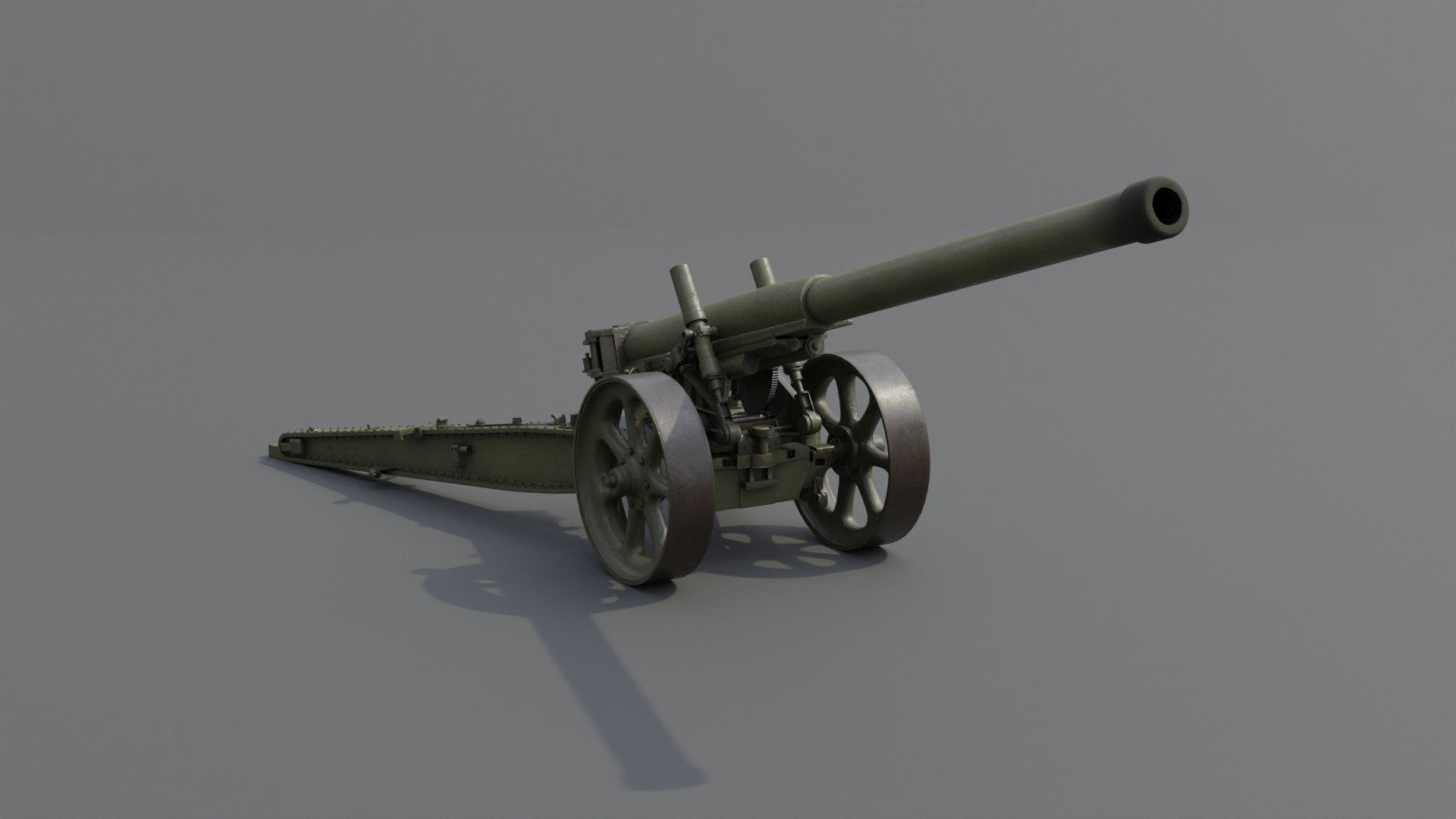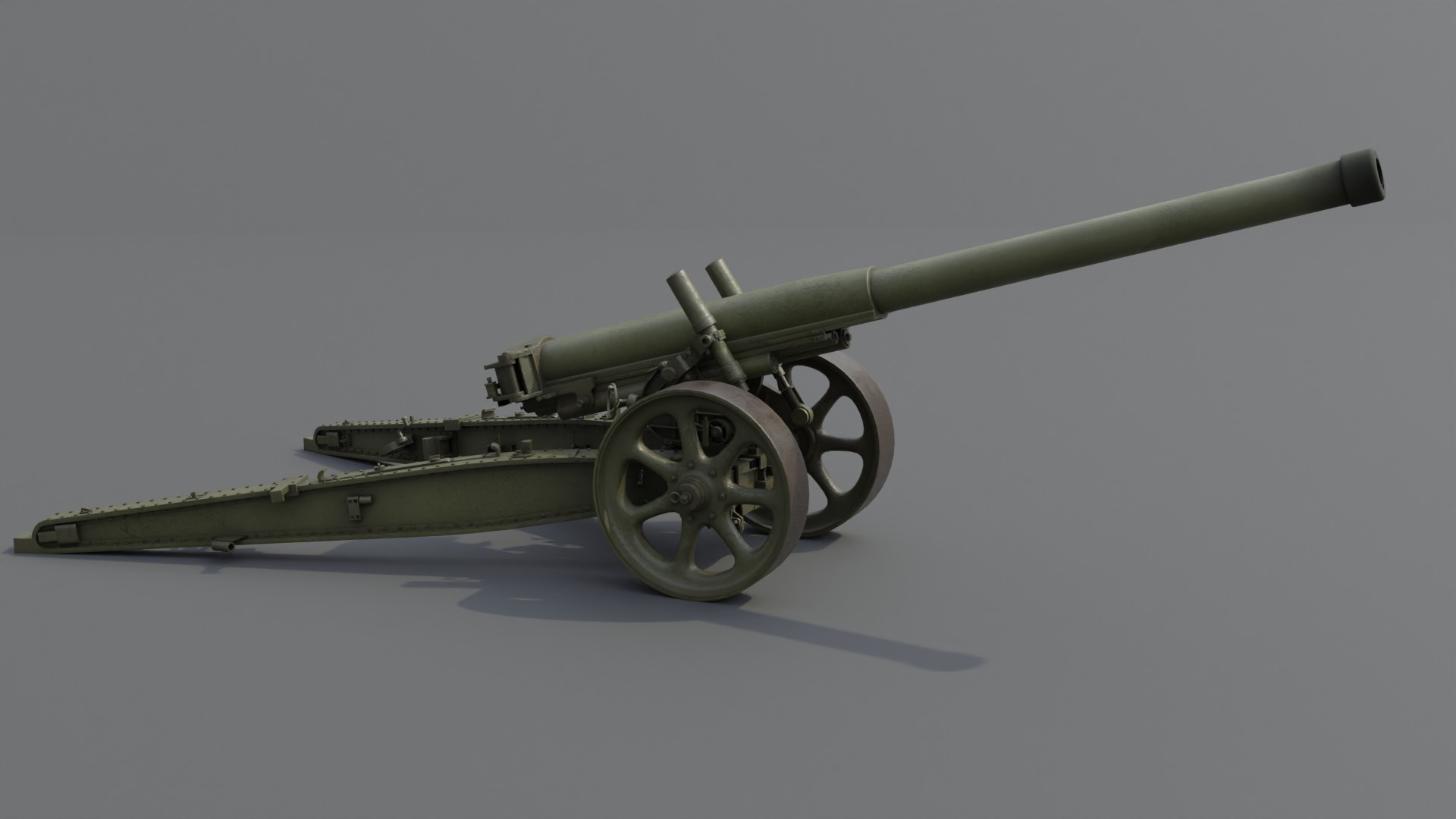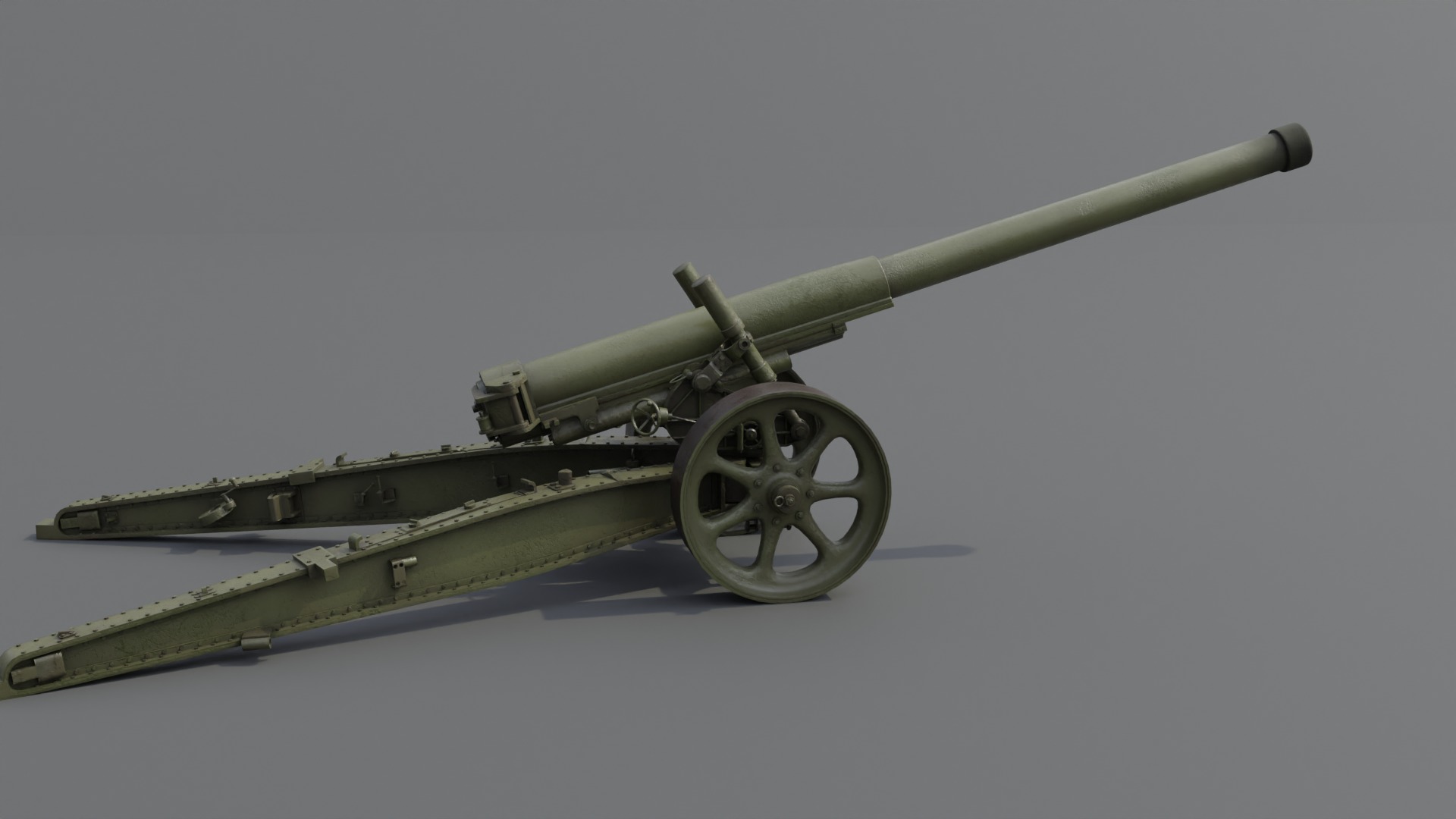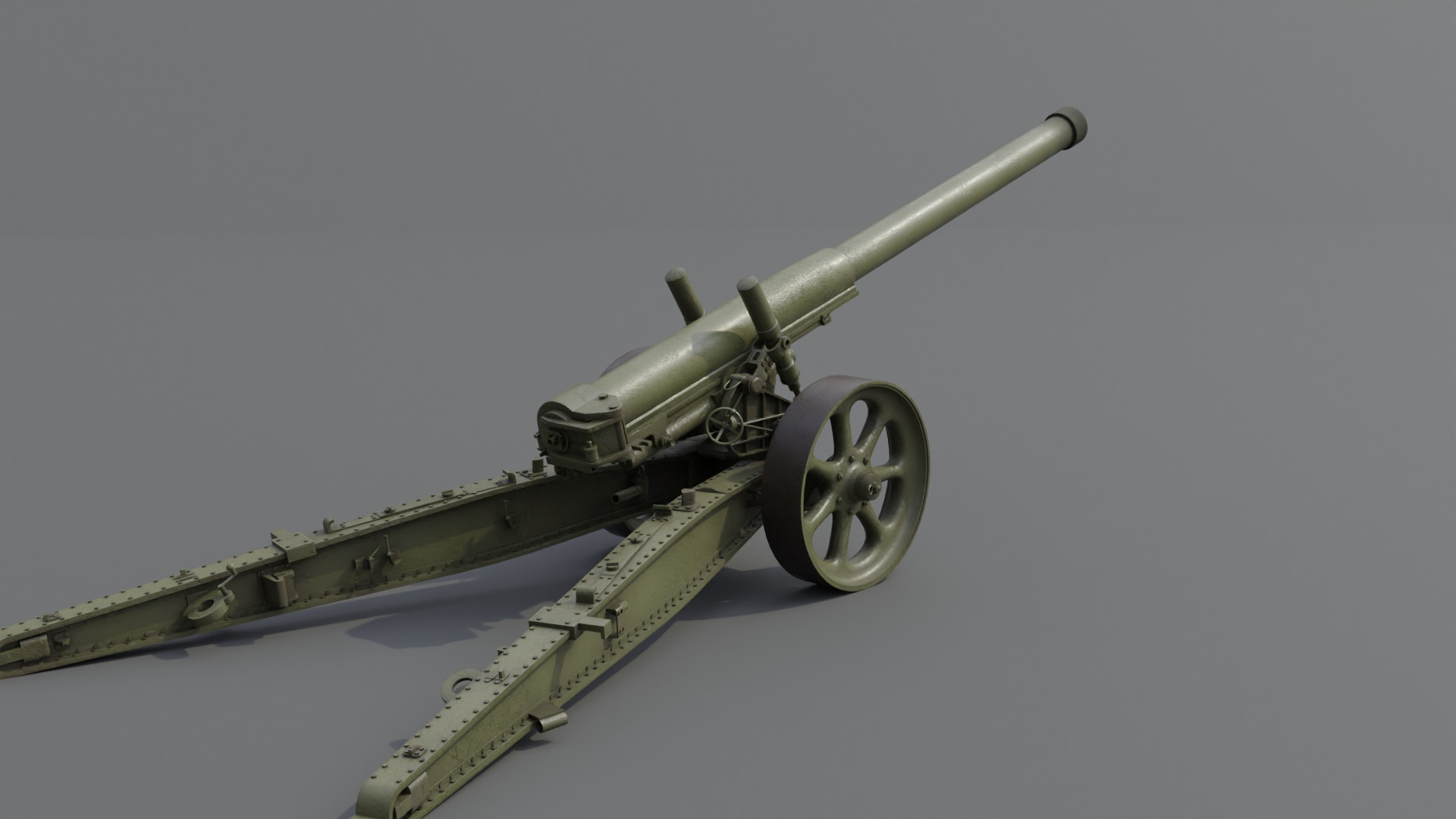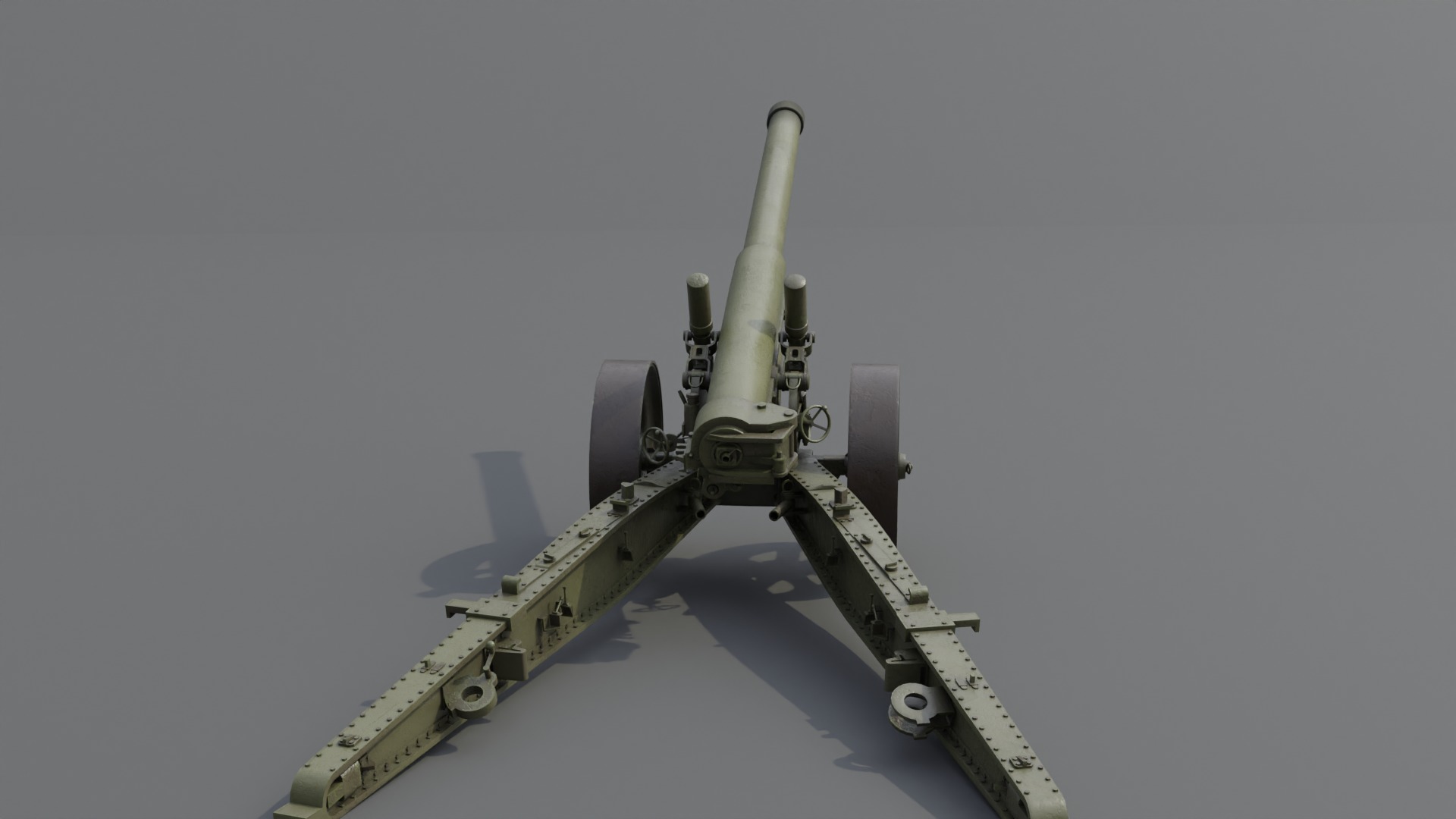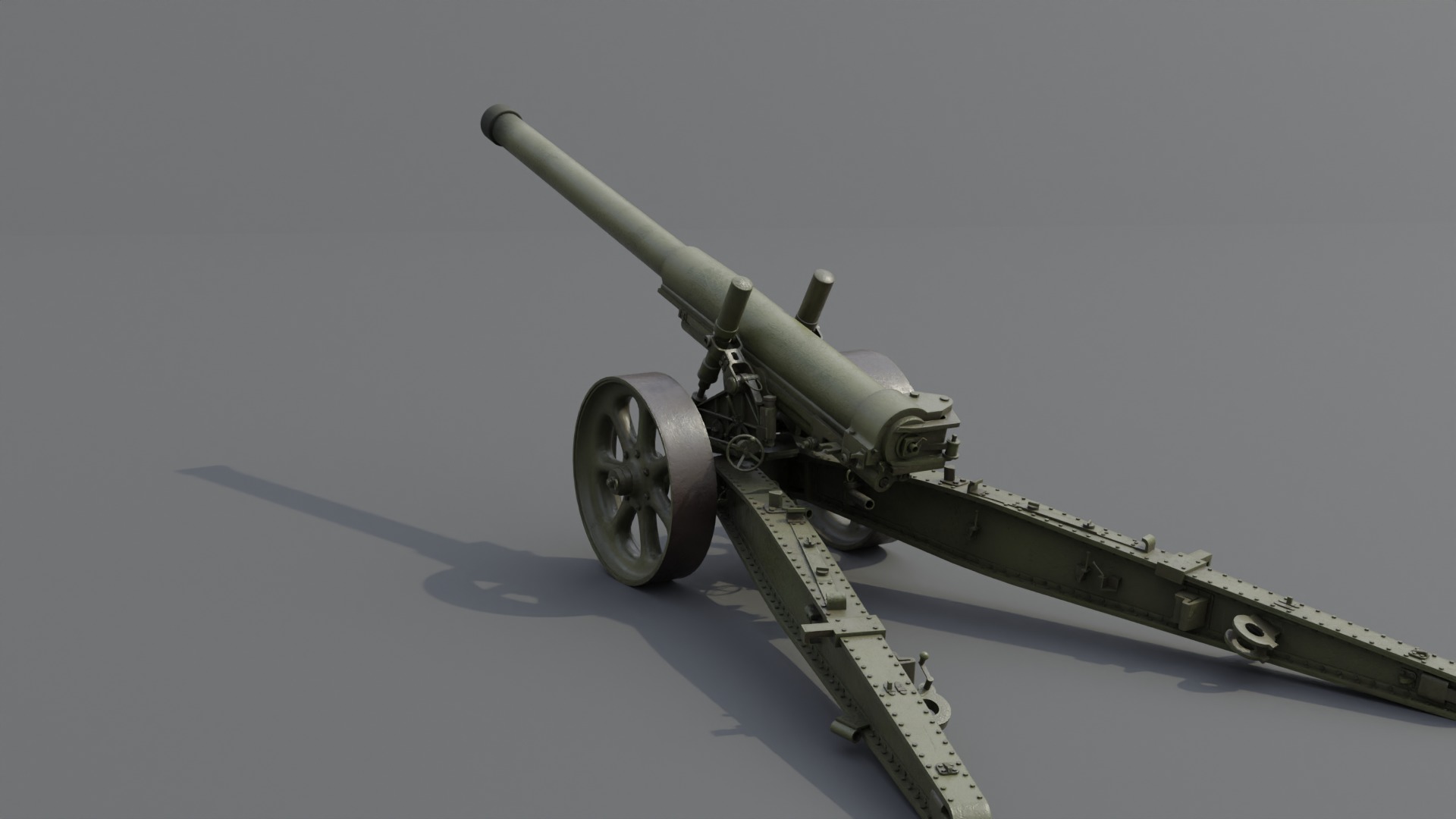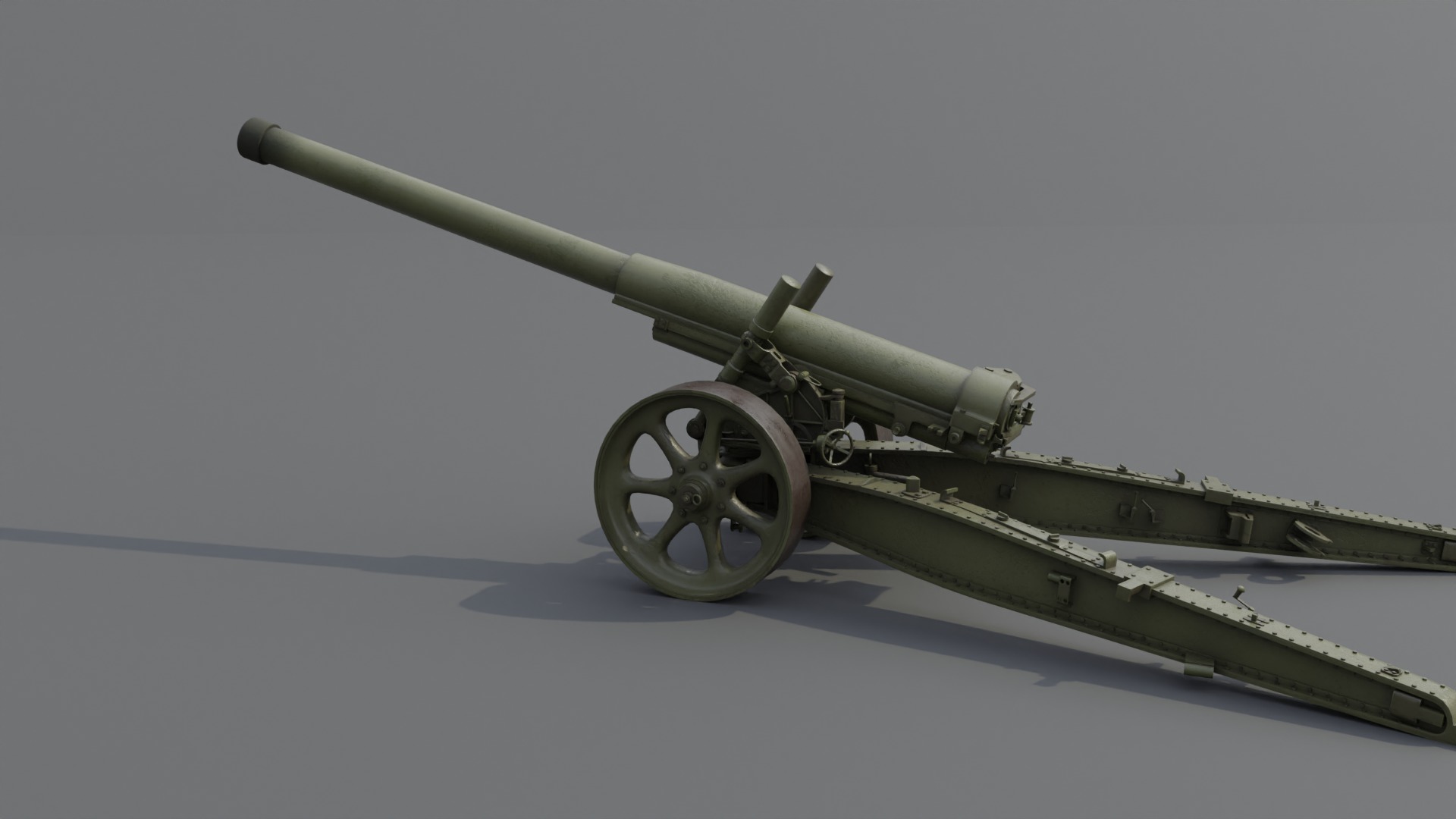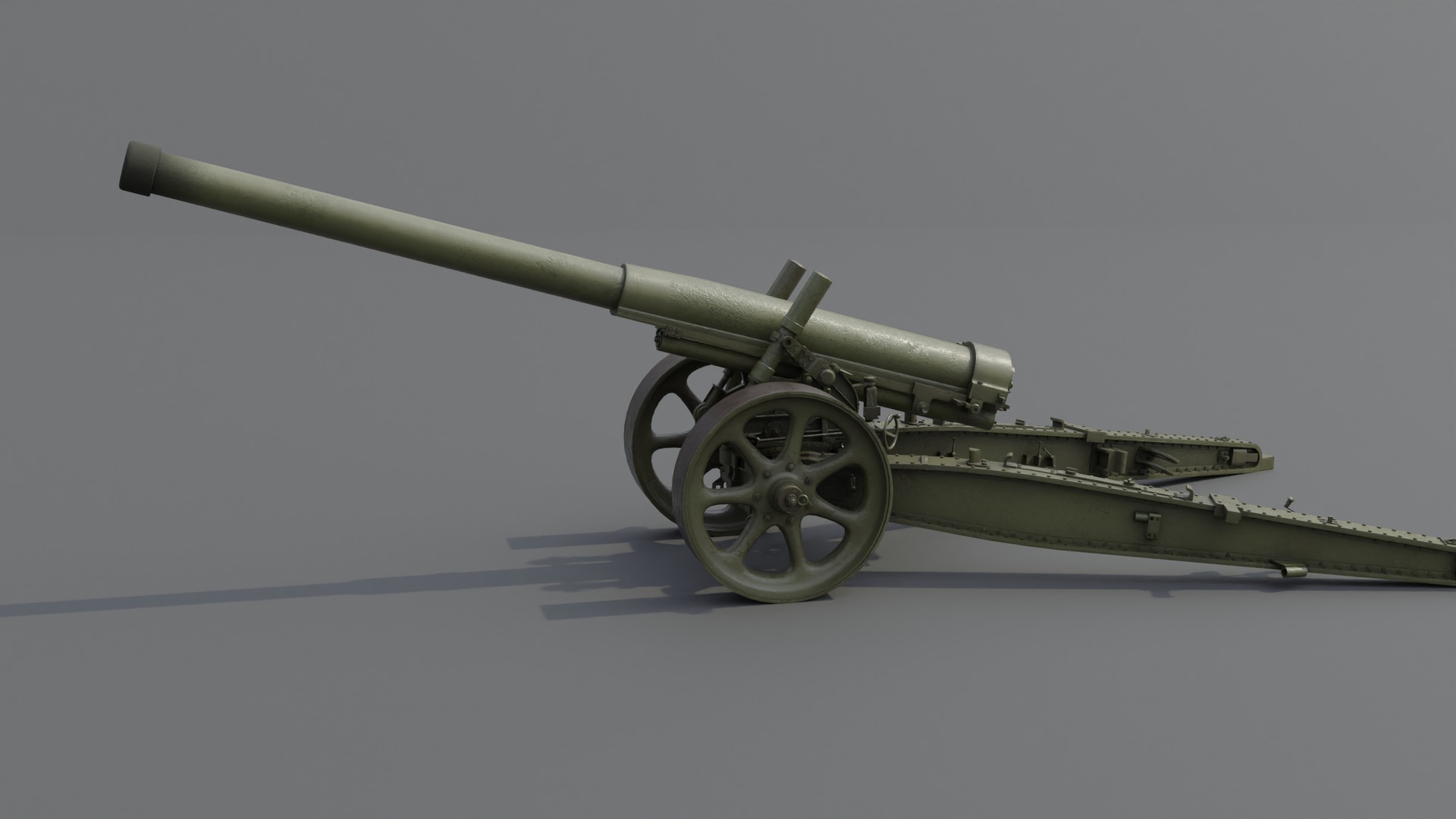
Type 89 15 cm cannon Low-poly 3D model
Type 89 15 cm cannon
ZIP file contain Blendfile, Texture folder , FBX , Obj mtl
Centered (in right place) and Seperated parts
Blender 4.0.0
Textured with substance painter (Basecolor , AO , Metalness , Roughness , Normal)
1 Set of material and 4 Texture (green , brown , winter , burned)
11 Seperated Objects
4k Texture
Pictures rendered in Cycles engine
Vertices:30,809
Faces:30,054
Tris: 51,405
Description:The Type 89 15 cm cannon was the main gun of the Imperial Japanese Army's heavy artillery units. The Type 89 designation was given to this gun as it was accepted in the year 2589 of the Japanese calendar (1929) It was widely used from the Manchurian Incident to the end of World War II, for example, Nomonhan, Bataan and Corregidor Island, Okinawa. The Type 89 15 cm gun was comparable to the U.S. M1918 155 mm GPF cannon, but it was less efficient than some similar heavy-caliber guns of other nations in World War II. Limitations notwithstanding, the Type 89 15 cm cannon was easier to transport and set up than other Japanese heavy artillery pieces.The gun had the split-box type trail with detachable spades and a single-axle gun carriage. The traversing hand wheel and the scale were located on the left side of the carriage. The elevation scale, the range drum, and the sight were on the right side of the carriage. It fired a shell considerably heavier than that used in the 150 mm howitzer. The Japanese were sufficiently satisfied with this gun to provide it with a fixed mount for siege use in 1930, but as a heavy field piece it had certain definite limitations. Traveling in two loads, it took longer to emplace than some weapons of corresponding caliber in other modern armies and yet it was outranged by all of them. However, long-range 15 cm cannons which broke down into two loads were not unique to Japan during World War II.


